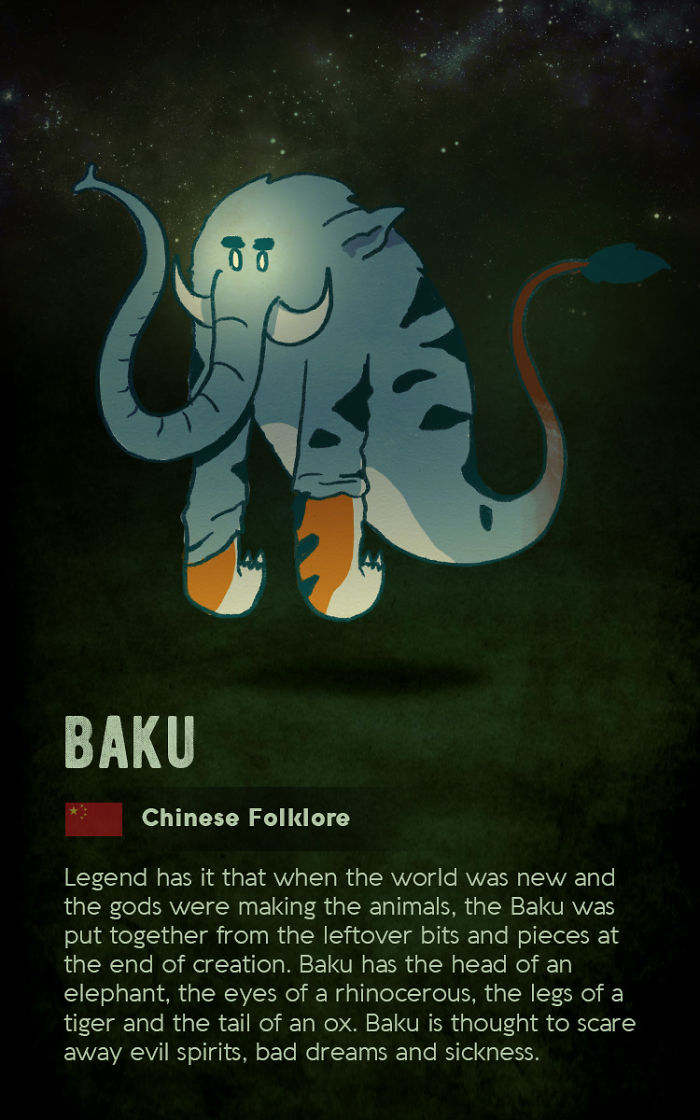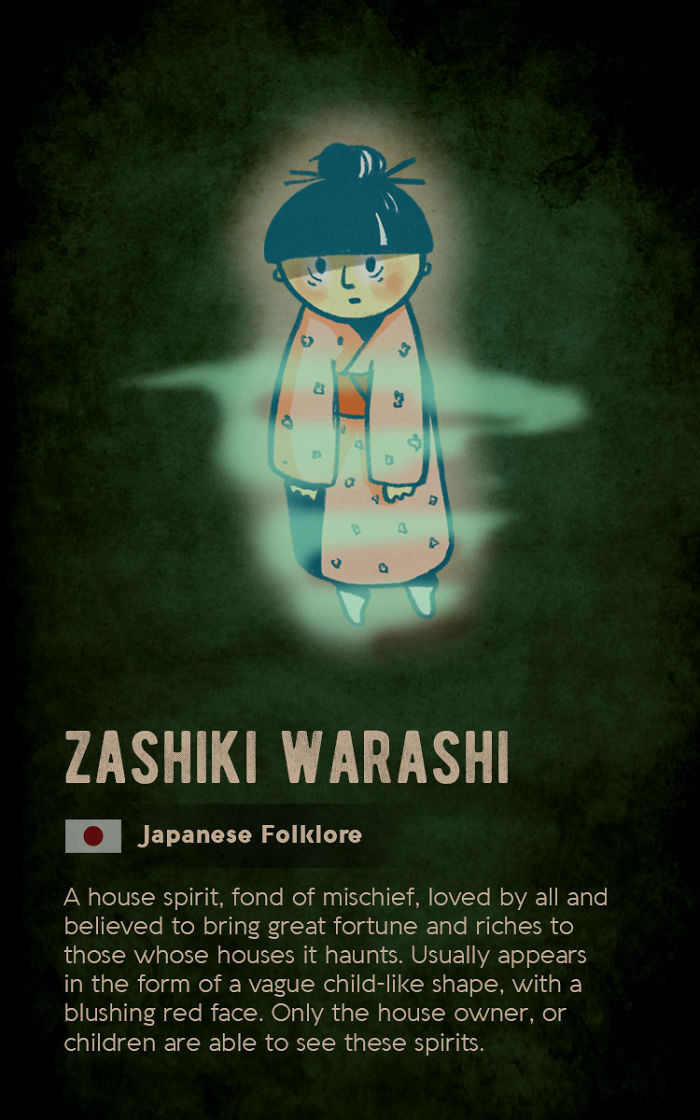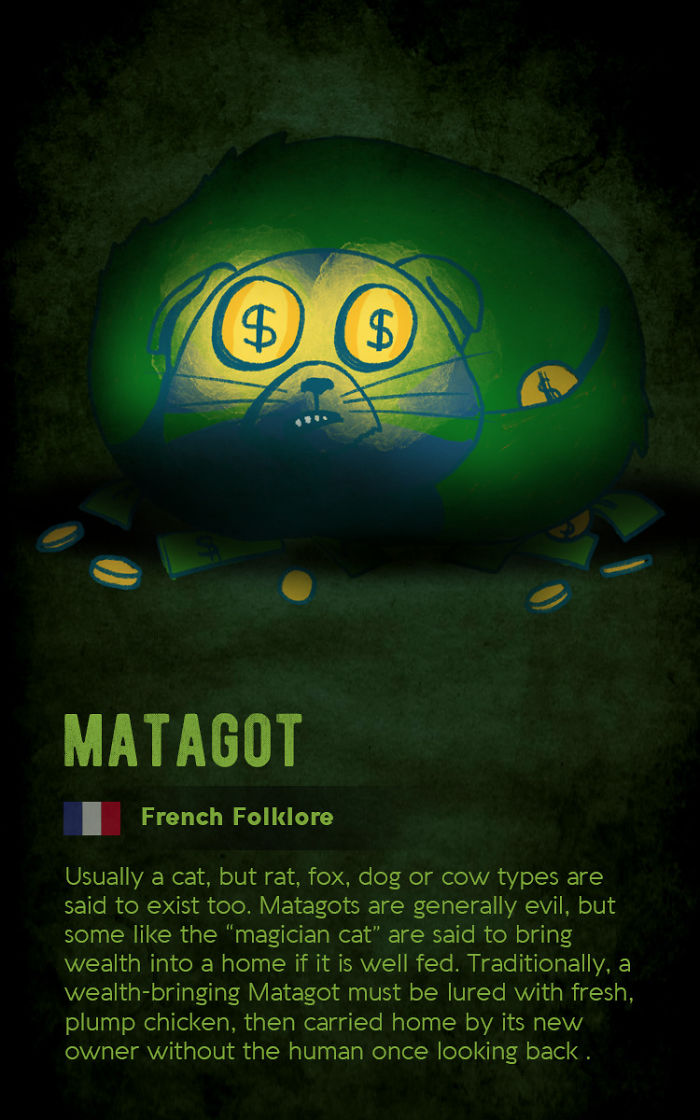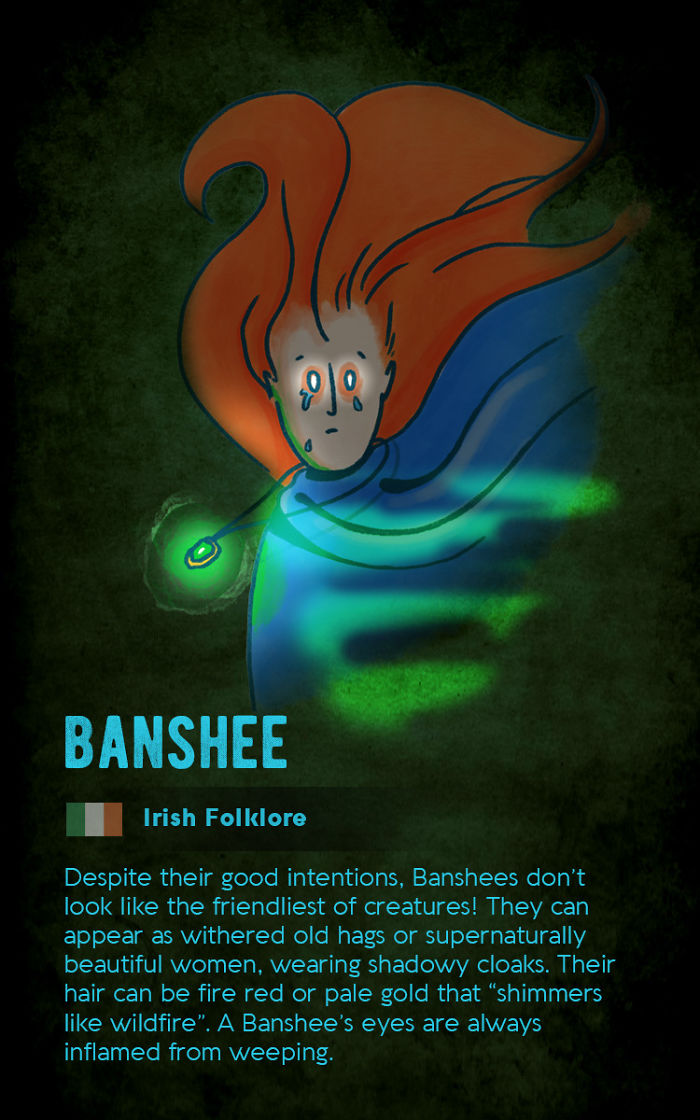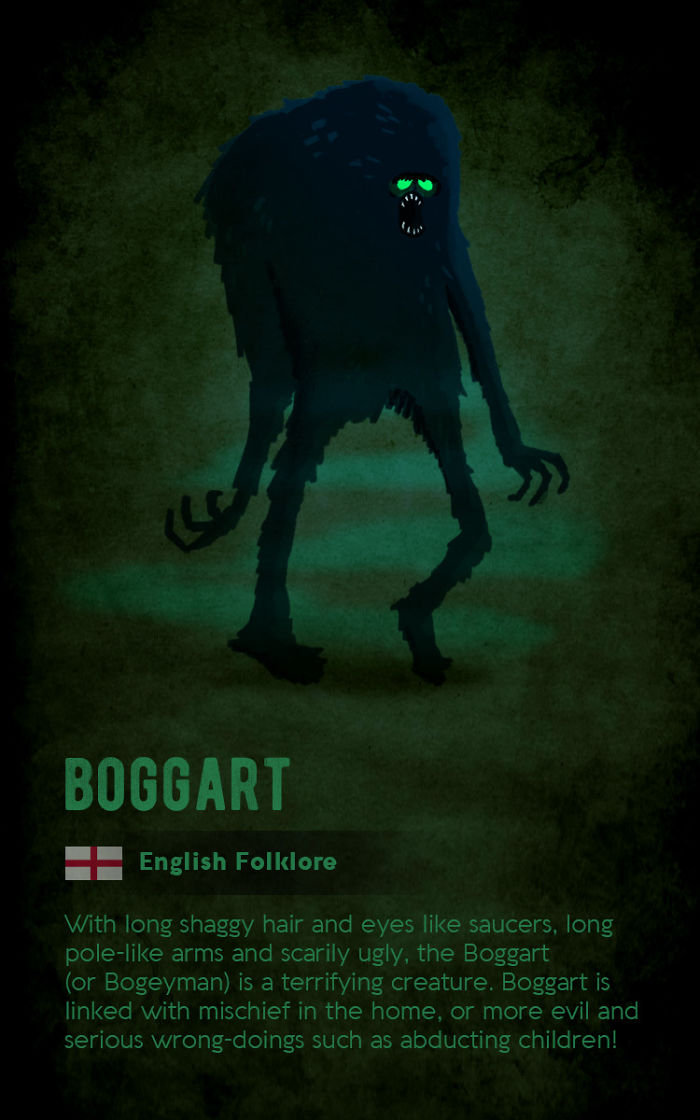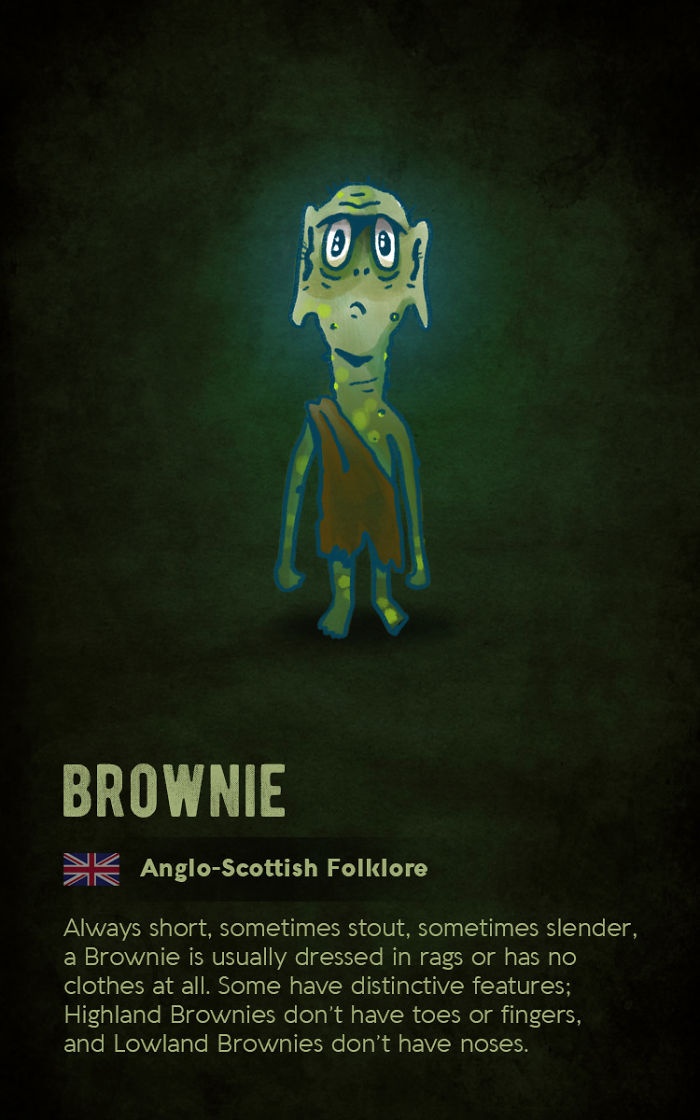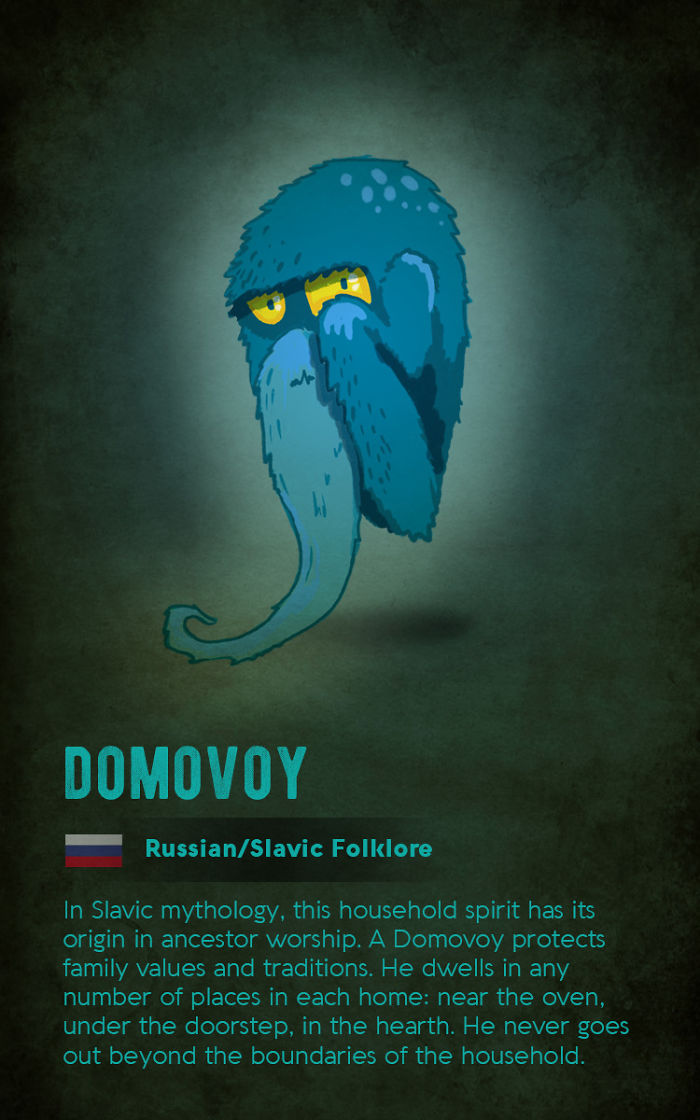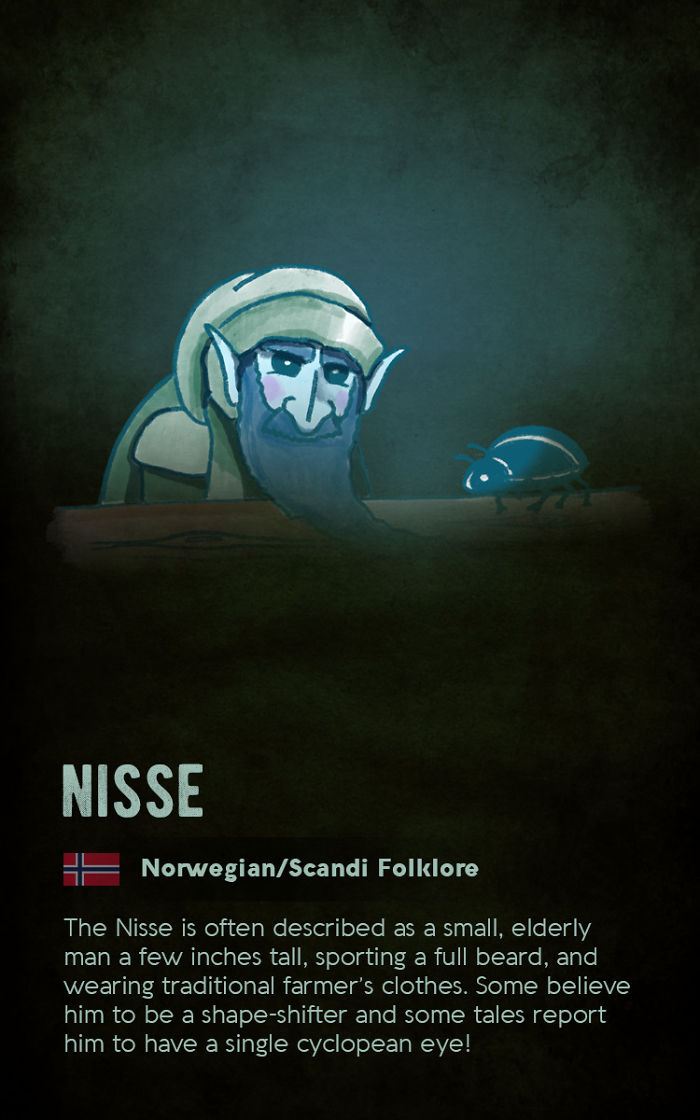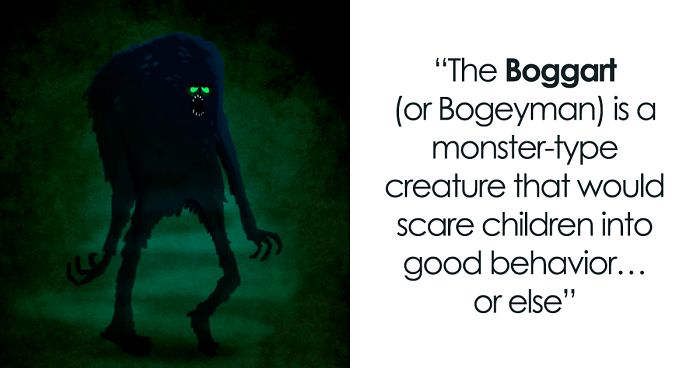
18Kviews
Mythical Creatures From Around The World That Live In And Around The Home (Our 8 Illustrations)
If like us you’d love your very own house-elf, there’s actually a good chance that you might already have one.
For centuries, the presence of house spirits and mythical creatures that live in the home have played a prominent role in folklore around the world, with many cultures embracing the interesting stories and superstitions that are passed down through the generations.
Some mythical beasts and spirits are known to be positive, while others… not so much.
If you’re in France, you might be privileged enough to share your home with a Matagot, a mythical animal that takes the form of a cat or sometimes a fox, rat, or dog. Matagots are said to bring good fortune… but only if you treat these fantasy creatures well!
On the other hand, if you’re in England, you might be unfortunate enough to live with a fantastic beast called Boggart (or Bogeyman as they’re affectionately known) – said to be the manifestation of all your fears, the Boggart is fond of mischief and wrong-doing; rattling doors, moving your things and they may even go a step further by stealing your children!
So, which mythical creatures do you share your home with? Check out the cool drawings Climadoor created below and let us know if any of them seem familiar…
More info: climadoor.co.uk
This post may include affiliate links.
Baku - Chinese Folklore
One of the more bizarre looking creatures, the Baku has its origins in Chinese folklore dating back to the 17th Century, but it can also be found in Japanese culture too.
It’s said to protect against bad dreams and would scare away evil spirits, therefore health and good luck are said to follow the Baku wherever it goes. As a result, the Baku was often carved into pillars above temple doors and sewn onto pillows and bedding to protect the person sleeping. The Baku is one of only a few holy creatures to be honored in this way.
It’s said that the appearance of the Baku came to be when the gods were making animals and once finished, all of the leftover pieces were put together to form another creature. With the head of an elephant, the body of a bear and the legs of a tiger, it’s an unusual creature but considered to be a favorite among the gods.
So a little bit like Bing Bong from "Inside Out" - He is a pink cat-elephant-dolphin hybrid!
Zashiki Warashi - Japanese Folklore
Fond of mischief and loved by everyone, the Zashiki Warashi is a house spirit that originated in Japanese folklore. They’re considered to be a guardian spirit and will bring luck to a household. It is said that a house with a Zashiki Warashi will prosper and become rich, whereas a house that doesn’t will fall into decline and ruin.
Particularly drawn to the children of the household, the Zashiki Warashi are child-like and fun; enjoying songs, games and nursery rhymes. For households that don’t have children, such as those of the elderly and infertile, the Zashiki Warashi are often treated like children themselves. Gifts such as sweets and toys would be left for them to play with, along with a bed to sleep in and food to eat.
Zashiki Warashi are often depicted as a ghost-like five or six-year-old child with a blushing red face and they’ll usually be wearing traditional clothes; a child-size warrior outfit for boys or a patterned kimono for a girl. Their hair would be short and bobbed or long and tied back neatly.
Matagot - French Folklore
Throughout many cultures, the black cat has its place in superstition with many negative connotations. But in French folklore, the Matagot is traditionally a wealth and luck-bringing creature that can be of great use to a household if treated right.
It’s said that a Matagot can be lured into the household with a fresh, plump chicken, and then carried home by its new owner without looking back. A comfy bed and the first mouthful from every meal should be given to the Matagot to keep it happy and content and it will repay its owner with riches and good health. Failure to do this will upset the new house guest and unfortunate things will begin to happen…
It’s said that the story of Puss in Boots is loosely based on a Matagot; who went out and bought his master food and riches to say thanks for his shiny new footwear.
Yeah, my cats truly appreciate their being rescued from shelters. I only wish that they had American Express cards to help with their expenses.
Banshee - Irish Folklore
If you’ve ever heard the expression “wailing like a Banshee“, you’ll probably understand to some extent what that means.
Banshees originated in Irish folklore around the 8th century, they were “born” as a result of the “keeners”, who were women that were hired to mourn outside of the house of someone who was expected to die. As this tradition died out itself, their legend lived on in the form of Banshees. Banshees are said to appear before someone dies in their designated family, they’ll weep and wail uncontrollably, which they say can be heard for miles, chilling the heart of anyone that hears it.
Banshees are noted as looking dark in appearance and not particularly friendly, despite their good intentions. They can take the form of either stunningly beautiful women or old hags that are dressed in shrouds with flowing dresses. They would have long, wind-blown hair that would shimmer like wildfire and their eyes would always be red and sore from weeping.
Boggart - English Folklore
The stuff of nightmares, the Boggart has been scaring children the world over for centuries.
Originated in English folklore, the Boggart (or Bogeyman as it’s known) is a monster-type creature that would scare children into good behavior… or else. Not one to shy away from causing mischief and terror, the creaking of floorboards, the dark shadows on the walls or those footsteps on the stairs would all be attributed to the Boggart.
It’s suggested that the term Bogeyman came to be as a result of the black plague and the men that were responsible for removing the dead bodies. They were often very sick themselves with dark skin and sunken eyes, a fearsome sight to say the least. Of that, the appearance of a Boggart is varied but often recorded as being very ugly with bestial attributes, large and imposing with a menacing presence.
Brownie - Anglo-Scottish Folklore
Ever wonder where the inspiration for Dobby the House Elf came from? Lots of the characteristics of a Brownie were used to create the character, which is understandable given J.K Rowling’s Scottish roots.
Found in Anglo-Scottish folklore, a Brownie is said to come out at night and perform various tasks and chores around the house while the owners are asleep. They are however easily offended and will leave the house forever if they’re upset, or they might even turn malicious like the Boggart.
Their appearance can vary depending on the region, but usually, they’re ugly with mottled brown skin and somewhat hairy, with old rags as clothes. In older folklore tales, they’re usually human-sized or larger, but over time they became smaller and wizened, almost frail in stature.
Domovoy - Slavic Folklore
The Domovoy originated in Slavic culture and is rooted in ancestor worship, with the mythical creature being the personification of kinship. They are said to protect the well-being of a house and those that live in it, being especially protective of children and animals by constantly looking after them. If however a Domovoy is angered by wrong-doing and bad behavior, he might quit his duties as a protector, leaving the kin open to illness and disaster.
They’re often depicted as an old, grey-haired man with a long beard, but the Domovoy may decide to manifest in different ways; this could be as a cat, dog or even as one of the families ancestors.
To keep the Domovoy happy, the family it protects with often give gifts such as food and maybe even the blood of a sacrificed animal if they’ve made him really angry.
Nisse - Norwegian Folklore
What we might consider to be the image of a Christmas elf, the Nisse hails from Norwegian folklore and the word itself is derived from the name Nils – which is Scandinavian for Nicholas.
Cheeky and mischievous, the Nisse will watch over the home or farm, tending to chores and the care of the farm animals – particularly horses. Hard working and industrious, the Nisse will work for very little in return, demanding only the respect and trust of the farmer and a bowl of porridge with butter on Christmas Eve. If the farmer doesn’t meet these demands, it’s said the Nisse will leave the homestead and the farm will not thrive, reducing the farmer to poverty.
As is our usual perception of Christmas elves, the Nisse is described as an old man, small about the size of a child with ragged clothes and a long beard. Some tales from Scandi folklore also describe them with a single cyclopean eye… Not something you’d expect to see on your Christmas card from your nan.
